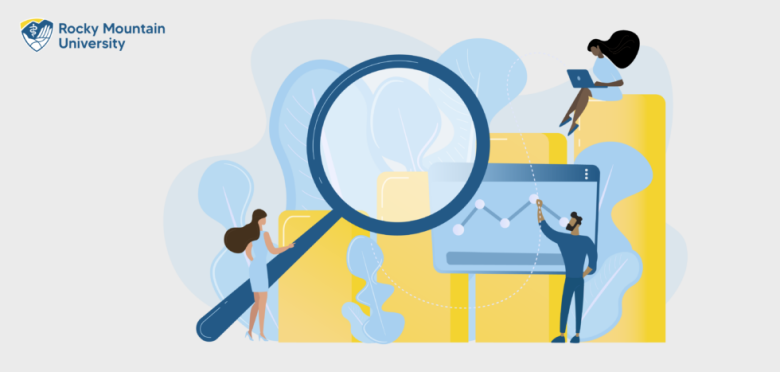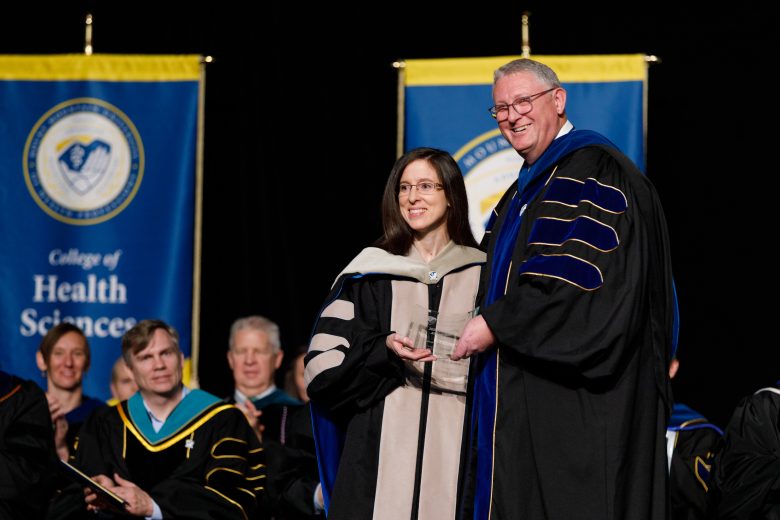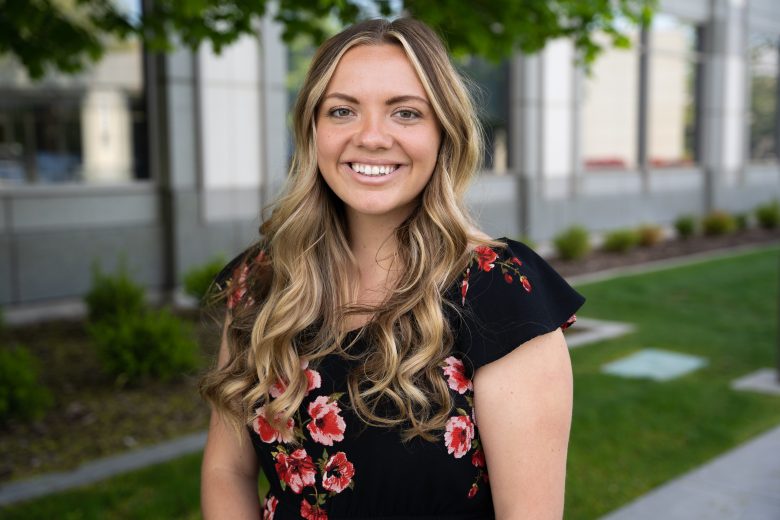Dr. Steven Wilkinson, Interim Chair and Program Director for the Doctor of Physical Therapy program at Rocky Mountain University of Health Professions, implements mindfulness training and practice in his classroom. Mindfulness is the ability of someone to develop an awareness of the present moment. “It fits into a broader field of meditation, but it’s really about training your attention, which especially in this day and age when we have so many distractions, has a lot of benefits,” said Wilkinson.
Wilkinson spends the first 10 minutes of class guiding his students through mindfulness training. Each student finds a comfortable spot and under Wilkinson’s coaching, they each take deep breaths, close their eyes, and focus on how their body feels – where their weight is distributed, the tension in their body. Then they focus on the sounds that they hear, sounds that if they weren’t paying attention they wouldn’t hear. Most of the time is spent on breathing. Thoughts may wander, which is okay, but they focus on getting attentive to their breathing.
Wilkinson utilizes the Headspace app to help and assist students in achieving the benefits of mindfulness.
Mindfulness Combats Distractions
A lot of the distractions people experience today is due to technology, which can create anxiety. “[Technology] distracts us essentially. We’re less productive because we’re getting bombarded all day long [with constant distractions]. That’s why I do mindfulness as part of our lab. We practice mindfulness, which has all the benefits I’ve listed for my students,” said Wilkinson. “The two I’m most interested in are anxiety and depression – graduate students are six times more likely to have anxiety and depression than the population at large. Is that because of technology solely? No, but I think it’s a big part.”
Wilkinson points out that pain comes from the brain itself. “The threshold of pain signal down to our senses from the brain can be lowered over time. If we can get the brain to be able to reduce by distraction those thresholds, we can help reduce pain.”
It Promotes a Healthy Lifestyle
Mindfulness can also help improve sleep, help in weight management, control appetite and hunger, and enhance the immune system. As it relates to students, mindfulness has been shown to help increase focus and attention, increase creativity, and improve memory. “Mindfulness can be used as a tool for students, and they can use it as a tool for their patients. It is really a good thing for them to learn,” said Wilkinson.
“We’re studying mindfulness to see if it makes a difference,” he said. “But I can tell you from my own experience, I never want to go away from this [mindfulness] because it has been such a good thing for me as a teacher. Students would come in and depending on what they had on their plates – perhaps another test coming up – the lab would not be very focused. But now that I’m doing this, students just take 10-minutes for mindfulness and the labs go so much better.”
Wilkinson points out that the literature is going along with what they are seeing regarding depression and anxiety that within eight weeks they can start to see a difference in practicing mindfulness for only 10 minutes per day.
Mindfulness Helps with Anxiety and Depression
Wilkinson refers to the mindfulness work of Richard Davidson and Daniel Goleman as additional references for some of the strongest research. “Their work relates to anxiety and depression. The idea is that they are looking at changes within the brain – emotion and physical changes related to depression and anxiety. The problem is that folks get stuck in kind of a loop. For example, if you had a breakup with someone or lost a loved one, or you lose your job, you get into a loop where you can’t think of anything else,” he said. “Mindfulness can break that loop and you can start thinking of other things.”
Wilkinson explains that the loop works in the amygdala portion of the brain – considered the primitive brain where the fight and flight response happens. When people are suffering from anxiety or depression they tend to have more activity in that part of the brain where the loop is happening. What the research is showing is that those who practice mindfulness are able to move their thoughts to their prefrontal cortex where higher-level thinking and rational thought take place.
“Instead of just thinking about how you were dumped, you can start thinking about how you’re going to move on,” said Wilkinson.
Students Implementing Mindfulness in Their Own Practice
As it relates to success among his students, Wilkinson said, “I just received an email last week from a student who was out on her clinical who practices mindfulness with a patient who was having chronic pain. She said mindfulness didn’t eliminate her pain, but it played a big part. It was very satisfying to get that email from someone who actually used the process.”
—————————————————————–
Listen to the full RMUpload podcast episode here.



